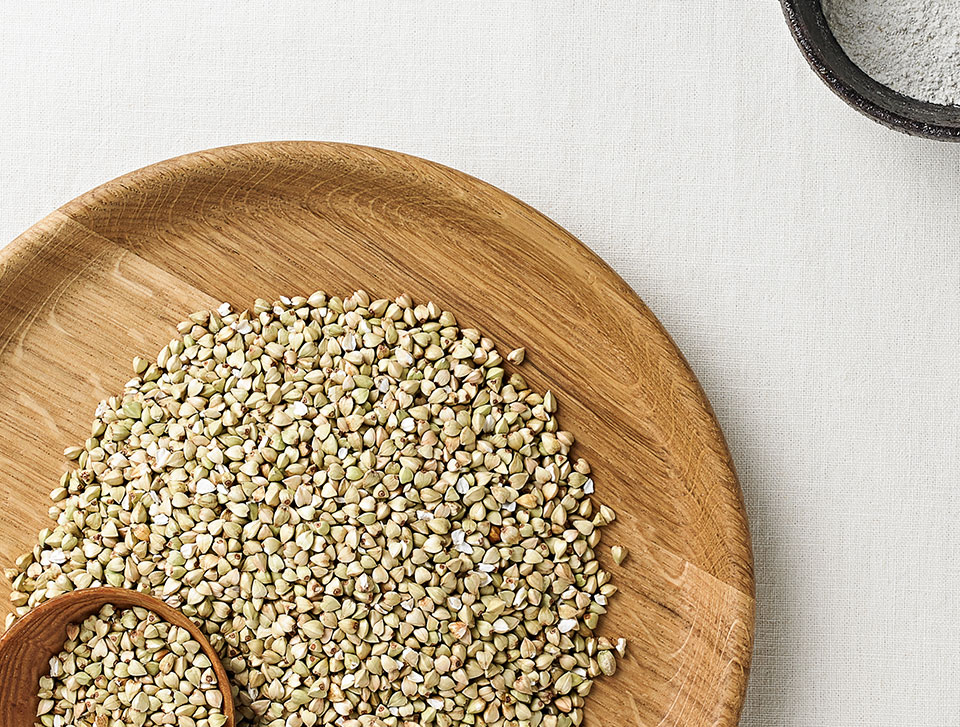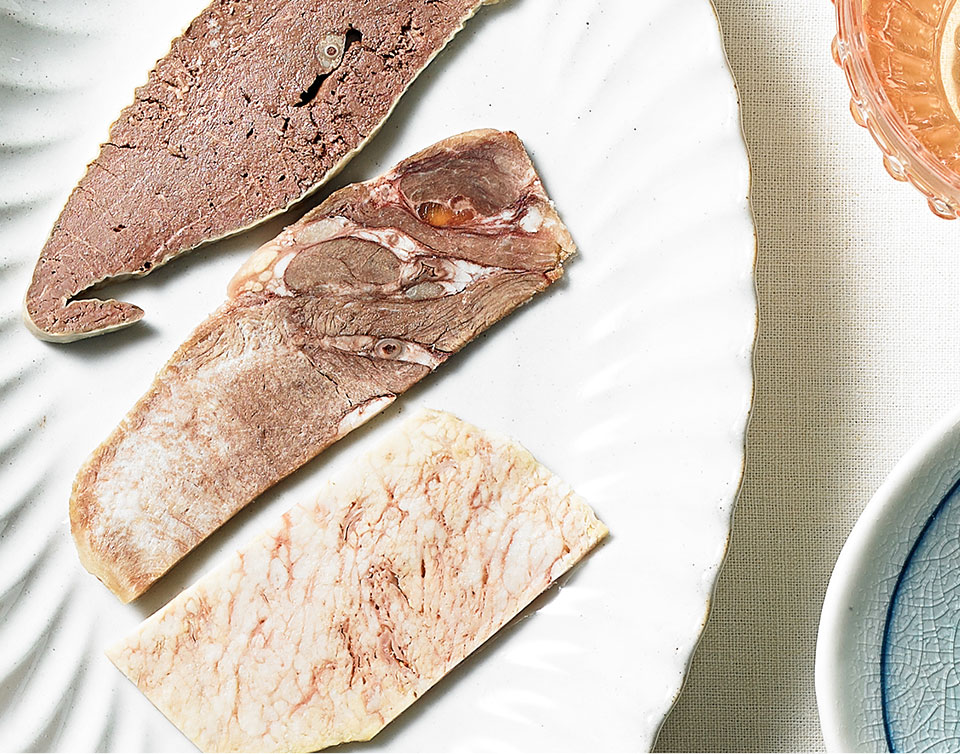Pyeongyang Naengmyeon is made of only one wish. Seogwanmyeonok is born with our style and the mindset towards customers.


The buckwheat noodle that makes Pyeongyang Naengmyeon of Seogwanmyeonog contains 100% domestic sweet buckwheat and bitter buckwheat called F. tataricum Gaertn, which is highly nutritious and useful and contain natural health functional substances.
The content of phenol is about two times higher than that of short buckwheat seeds, and the flavonoid content of total phenol is about 50% to 50% of short buckwheat, about 95% to 95% of tataricum Gaetn, and the short buckwheat rutin of tataricum Geatn is 14 times higher thant that of ordinary sweet buckwheat, Bitter buckwheat has stron antioxidant activity, and these antioxidant activities are closely related to the inhibitory effect of adipocyte differentiation. The nutritional value of buckwheat noodle shows that 100 grams of cooked buckwheat noodles makes 99kcal (410kJ). Buckwheat noodles contain all eight essential amino acids, including lysine, which is lacking in wheat. It contains antioxidants, including quercetin, and essential nutrients such as choline, thiamine, and riboflavin. Also it contains polysaccharides that are easily digested.

The broth that makes Pyeongyang Naengmyeon in Seogwanmyeonog uses domestic female Hanwoo, and boils the most delicious parts of beef for 3 hours to filter the oil and residues to make clear broth.
In order to preserve the natural taste of the ingredients, it is boiled with Korean aged soy sauce and Shinan sun-dried salt for 7 years by Jimin Jung, a master of traditional Korean food, at Boeun ‘Gosirang’.
Also, in order to reproduce the taste of the traditional ingredients, the Berkshire black pork and Jeju chicken, which are native chickens of Jeju Island,
are boiled for three hours and mixed with the proper ratio in order to reproduce the taste of the local ingredients. The broth is served to the customer after one day of aging, while minimizing other seasonings in order to preserve the best ingredients and the original taste.
The garnish on Pyeongyang Naengmyeon is served with green cabbage kimch, boiled egg, avoiding to get blurred broth, and meats from broth.
In Donguksesiki (around 1840, Hong Seokmo), he talks a bout Naengmyeon.
-
Naengmyeon is known as naengmyeon, where buckwheat noodles are not radish kimchi and cabbage kimchi and pork is sliced.
In addition, it is known as "bibim naengmyeon," which is mixed with japchae, pears, chestnuts, beef and pork and seasoned with buckwheat noodles.
Pyeongan is the best place for naengmyeon. "Nabu’s Yeongo got a variety of foods and then boiled them all together," I think. "An antique is like bibim naengmyeon," which means mixing various kinds of dishes. The small radish kimchi is called dongchimi. Adding ginger and pine nuts to boiling water with dried persimmons is called fertilization. It's all winter food.
-
As a result of this record, 100% pure buckwheat and domestic perilla grown in Gyeongju were created by a combination of raw oil produced from cold oil.


Jeyuk is a pig meat made from bus-hike, which is cultivated by Park Hwa-chun, a veterinary professor at Seoul National University, at Namwon Inwol Village on Mt. Jiri. Berkshire adopted the Berkshire variety in the U.S. in 2000. We applied "K" at the end of this product because it is suitable for our environment.
Berkshire is a breed of pigs found in Berkshire in southern England mixed with traditional Chinese pigs, also known as "cham," because its nose, legs, tail and parts are white. Berkshire is largely American and British, and the UK has a long history of being founded in 1875.
The United States was first introduced in 1823 by British immigrants, and Namwon Berkshire imported American breeds and bred and bred. In the beginning, I suffered from more fat than flesh, but after repeated breeding, I found Berkshire today. And because of the Korean climate, it was named 'Burkshirek.'
There is a reason why BerkshireK tastes different from other pork. The first taste I chew is excellent. The reason for this is that unlike white pigs, the cross-sectional area of the muscle fiber is small (about 14 percent) and the number of muscle water is high (about 22 percent). The moisture is well condensed and the small fibers are high, which can give a moist yet elastic texture.
It the meat is over cooked or got cold, it will be tough. But Berkshire K will help keep the bundle of muscle fibers with a small cross-sectional area to maintain moisture and elasticity. Second is flavor.
The muscle cells in the meat have some glucose. Glucose exists for use as a cell’s energy source. Berkshire K has about 9% more glucose than regular pigs. There is a rich flavor of carnosine (a kind of amino acid) that gives it a rich flavor.
The essential part is the fat. In pork, fat affects taste a lot. Berkshire’s fats are 20% less moisture tant other pigs, and more unsaturated fatty acids. Melting temperature is lower than other breeding (approximately 22-25 degrees). Therefore, even the body temperature in the mouth melts the fat oil.
Both of these features make the fat texture elastic, yet soft and catch.
[Source : Joongang daily newspapaer]
Tangle Tangle, Namwon Balck Pig… I came from America 110 years ago.

Salted Shrimp mixed with meat is salted with winter shrimp. Gwangcheon has been famous for producing shrimp since the Goryeo Dynasty. There was a shrimp market in Onampo-gu, and at the end of the Chosun Dynasty, ships on more than ten islands started to sell shrimp.
On the back mountain of Tokbae village, there was a crypt that was drilled for mining during the Japanese colonial period but it makes the salted shrimp made better. The temperature inside the crypt is around 15 degrees Celsius. At this temperature, not only are the shrimps fermenting well, they are not spoiled in Summer.
[Naver Knowledge Encyclopedia]
Mineral Shrimp-Natural seasoning obatained from crypts (After eating)
Under these circumstances, salted shirimp made of Winter shrimp is one of the best products. It’s good enough to enjoy with the savory taste of shrimp.


The most delicious parts of beef (Yangji, Sangjak, Gopchang, Useol, So-ri, Yang, Hongchang, liver, Heopa, and Jira) were included in about 10 dishes, including green onions, mugwort, eggs, rye mushroom, silver mushroom, shiitake mushrooms, and 1 million mushrooms. This restaurant reproduces the delicious aroma of Pyongyang.
The word "bokjeok" is a traditional Korean food in Pyongyang, and although we do not know the exact reason why it was called a beef dish, we suspect that it was wrong to pronounce the word "woobok." It is generally known as a food that originated and developed in Pyongyang’s shopping district. For that reason,
when hostile feelings arise due to each other's interests while bargaining, it is interpreted that if a dish of fishing is held together, hostility or tension is eased and difficult bargaining is easy, and developed in the shopping district.
The recipe is to boil and season the head of a cow, the head of a lamb, and the breast, and then spread it on a brass plate with a 50cm diameter plate, garnish with egg strips, green onions, pears, and pine nuts, and pour hot broth in the middle. Three or four people sit around and eat pyeonyuk on the grass, sometimes tilting the broth, and mixing buckwheat noodles with sari when they are almost there. You can mix chicken in addition to cow's breast
Instead of putting it in their own bowl, they put it in a large communal bowl and eat it in several times. Especially, it is very interesting to talk with soju and eat it.